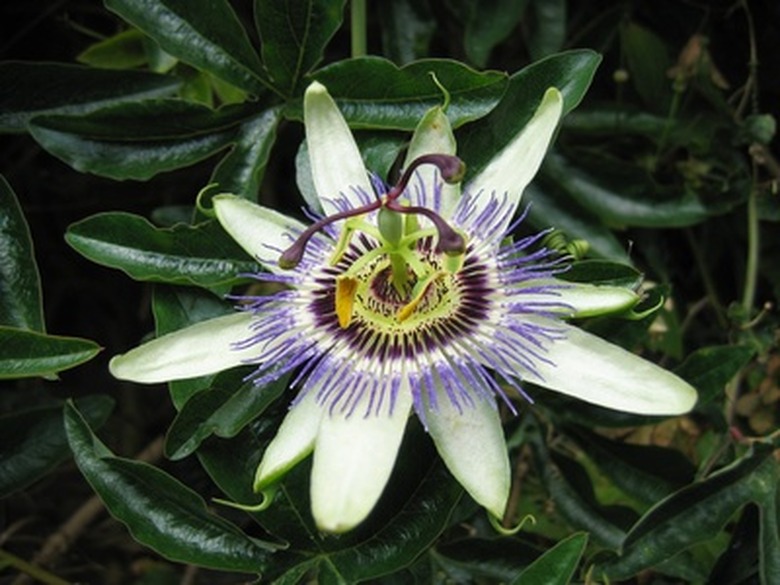When To Prune A Passion Flower
Passion flowers (Passiflora spp.) are exotic-looking flowers that are native to the United States, as well as South America and Australia. Passion flowers grow on vines, which are vigorous plants that can clamber up to 30 feet in one season along a trellis, arbor or another support.
Passion flowers (Passiflora spp.) are exotic-looking flowers that are native to the United States, as well as South America and Australia. Passion flowers grow on vines, which are vigorous plants that can clamber up to 30 feet in one season along a trellis, arbor or another support. In order for passion vines to grow healthy and lush-looking plants, they need regular, yearly prunings.
Late Winter
In late winter, when passion vines are dormant and not actively growing, is the ideal time to prune them. An annual pruning helps train them, encourages fuller growth and prevents them from invading nearby spaces.
Early Spring
If your vines start growing before you had a chance to prune them, don't fret. You can also prune passion vines annually in the early spring just before new growth or after new growth begins to grow.
- Passion flowers (Passiflora spp.)
- In late winter, when passion vines are dormant and not actively growing, is the ideal time to prune them.
Other Times
During active growth, newly planted vines should ideally be allowed to grow to their fullest potential that first season. However, if they or older vines are imposing in unwanted areas, such as up trees and shrubs, and are getting out of control, you can prune them anytime.
Pruning Tips
Disinfect tools with rubbing alcohol after cutting other plants, including other passion vines, to help prevent the spread of any possible diseases. Cut off all the dead and thin wood and leave a few strong, well-budded stems. Do not cut passion vines to the ground like you may for other vines. Fertilize passion vines after pruning in the late winter or early spring with a low analysis balanced fertilizer, such as one labeled 6-6-6.
Passion Flower Pod?
Native to South America, this fast-growing vine has colorful white and purple flowers followed by a purple fruit that has a hard covering. but some growers hand-pollinate the flowers. Yellow fruits are larger, sweeter and less acid, have more juice and a richer aroma and flavor. Flowers have more intense coloration, especially the purple central color. This is the most cold-hardy of the passion flowers, growing in USDA zones 5 through 9. Native to the Eastern United States, the vine grows 6 to 8 feet in a season and blooms from July to September with large fragrant 2 1/2 inch white and lavender flowers. Use the vines as a screen or to cover a trellis. To avoid bruising and possible fungal infection from contact with the soil, pick the fruits from the vines just before they are fully ripe. Maypop fruits are eaten fresh or made into jelly.
- During active growth, newly planted vines should ideally be allowed to grow to their fullest potential that first season.
- However, if they or older vines are imposing in unwanted areas, such as up trees and shrubs, and are getting out of control, you can prune them anytime.
References
- University of Florida: Passion Vine: An Attractive Exotic Perennial; Gene McAvoy
- Washington State University: Blue Passion Flower
- Economic Botany: The Edible Species of Passiflora
- Purdue University NewCrop: Fruits of Warm Climates: Passionfruit
- California Rare Fruit Growers: Passion Fruit
- Missouri Botanical Garden: Passiflora Incarnata
